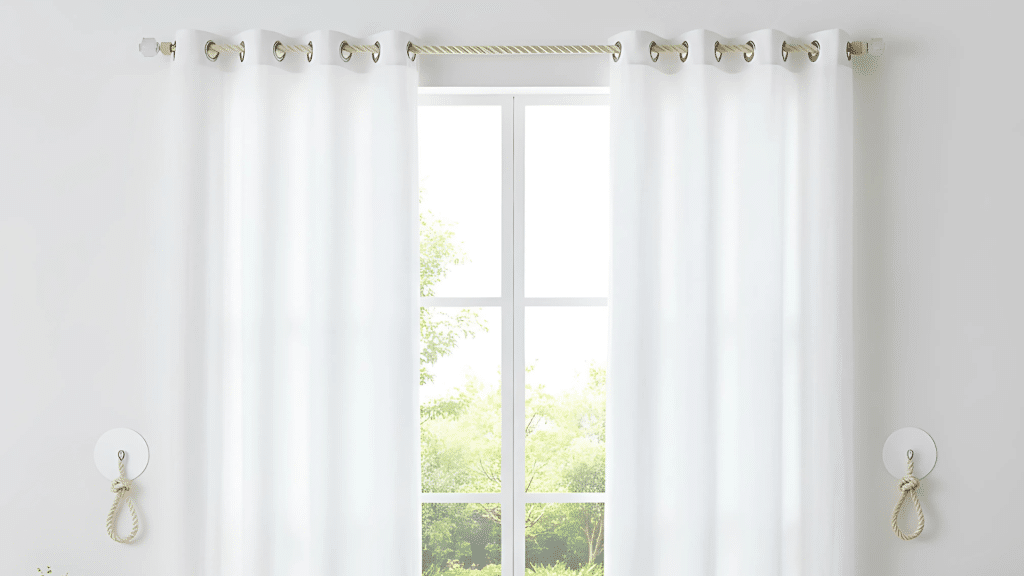Staring at bare windows, thinking about how to hang curtains without a rod? Or maybe your rental doesn’t allow drilling holes in the walls. You don’t actually need a traditional rod to hang beautiful curtains.
There are many methods that work just as well as regular rods, and some are even easier to install.
You’ll save money, protect your walls, and still get the privacy and style you want.
In this blog, you will see how to hang curtains without a rod and the benefits of it, several practical methods, and tips for hanging curtains without a rod.
What Tools and Materials Do You Need?
The sticky hook method is one of the easiest ways to hang curtains without damaging your walls.
| Material | Purpose |
|---|---|
| Strong hooks (4 pieces) | Support the curtain weight |
| Rope or strong string | Acts as the hanging line |
| Curtains with grommets or tabs | Easy to thread onto a rope |
| Scissors | Cut the rope to the proper length |
| Measuring tape | Ensure even spacing |
| Level (optional) | Keep hooks straight |
Step-By-Step Process: How To Hang Curtains Without A Rod
Here’s the complete process, simple steps that anyone can follow, even if you’re not handy with tools.
Step 1: Measure Your Window Frame
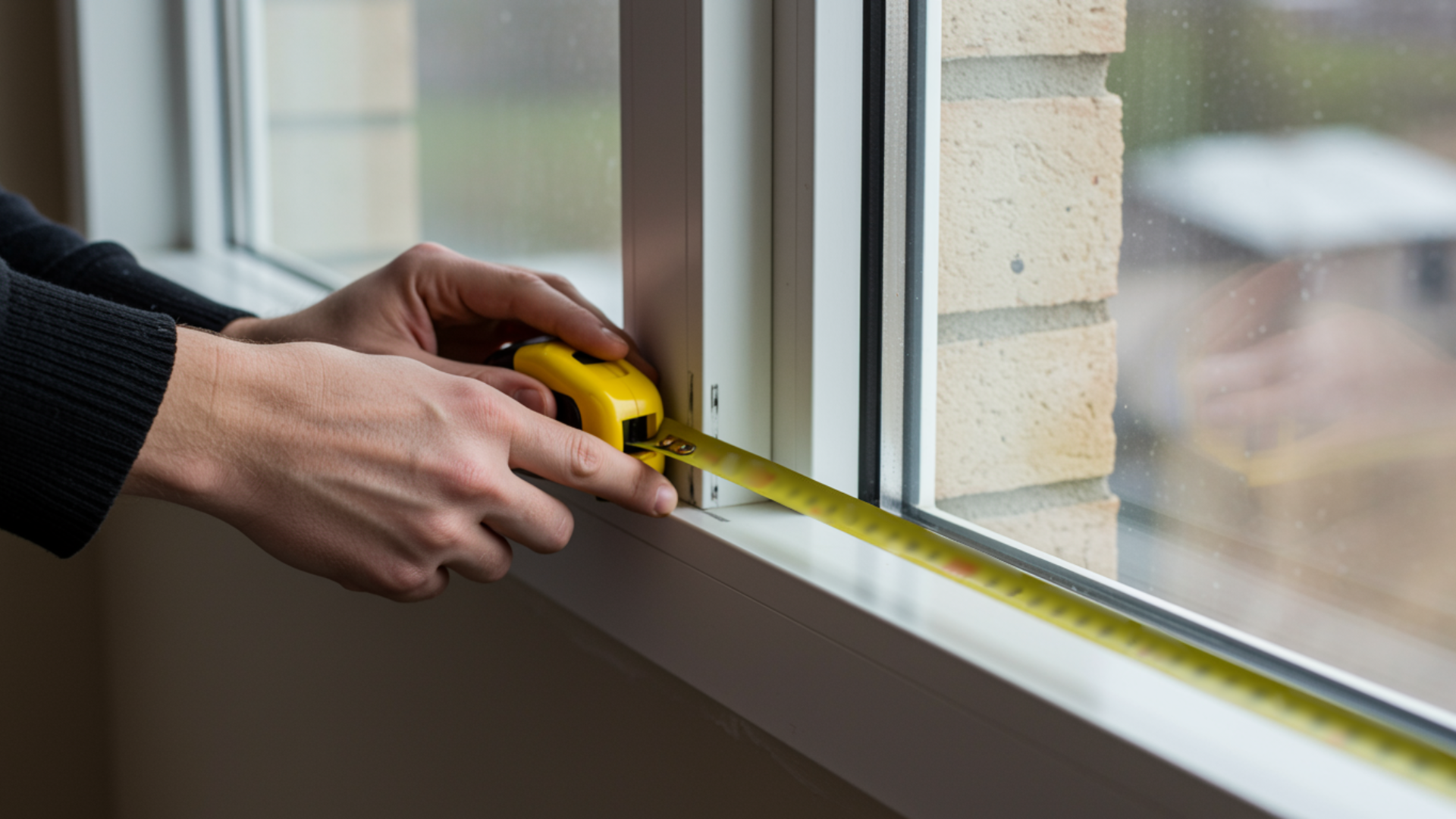
Start by cleaning the window frame where you’ll place the hooks. Measure the width of your window and add 6 inches on each side.
This extra space helps your curtains look fuller when closed. Mark these spots lightly with a pencil so you know exactly where to place your first and last hooks.
Step 2: Install the Adhesive Hooks
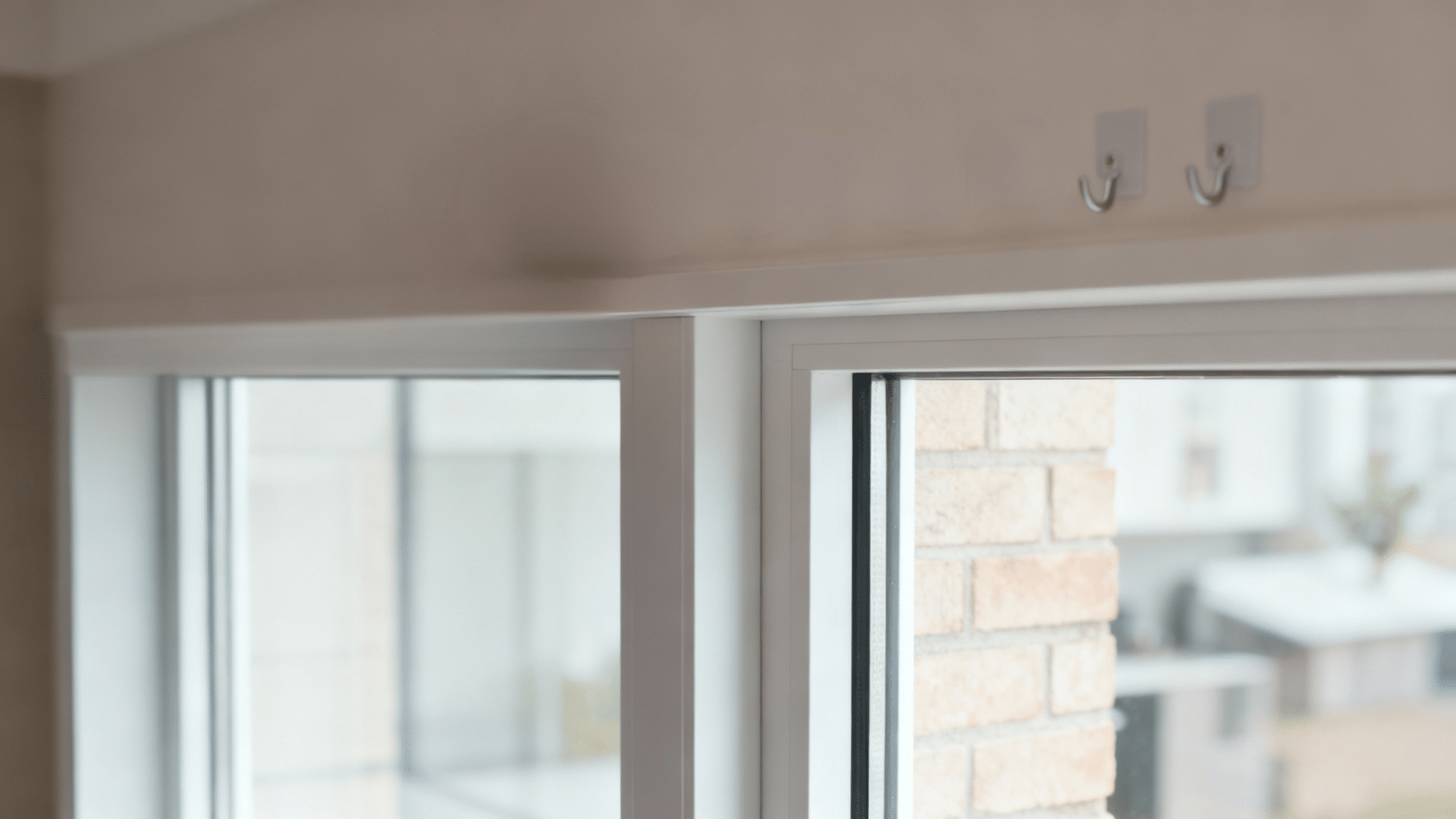
Remove the backing from your adhesive hooks and press them firmly against the wall or window frame. Space them about 8-10 inches apart across your measured area.
Hold each hook in place for 30 seconds to ensure a strong bond. Wait one hour before adding any weight to let the adhesive set properly.
Step 3: Thread the Rope Through the Hooks
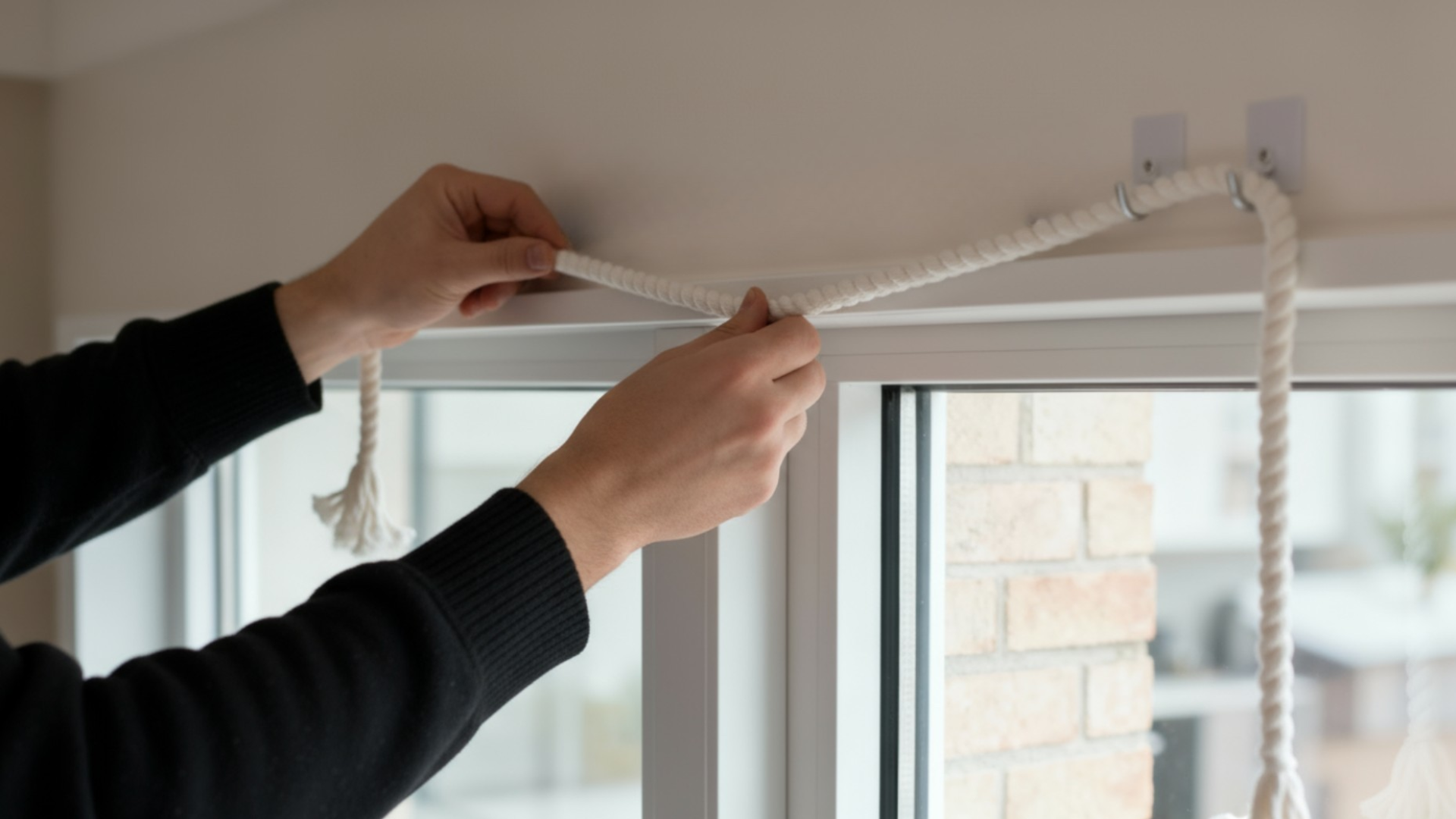
Cut your rope about 12 inches longer than the distance between your end hooks. Thread the rope through each hook from left to right, keeping it fairly tight but not stretched.
Leave about 6 inches of extra rope hanging on each end. This creates your makeshift curtain rod, which is ready for hanging.
Step 4: Hang Your Curtains on the Rope
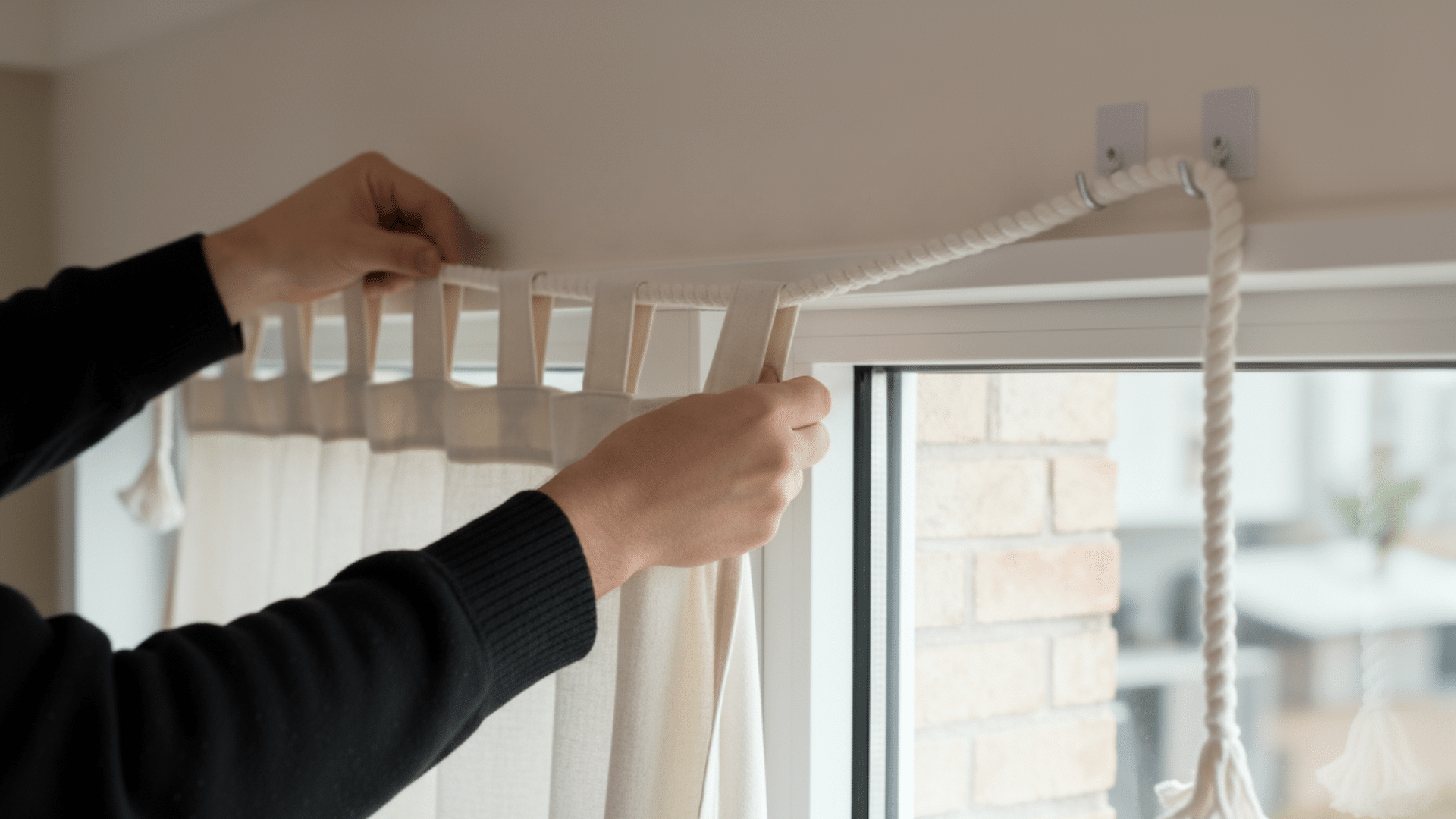
Thread your curtains onto the rope just like you would with a regular rod. If your curtains have grommets, slide them over the rope.
For tab-top curtains, loop each tab over the rope. Space the curtains evenly across the rope. The rope might sag slightly, but this actually creates a nice, relaxed look.
Step 5: Adjust and Test the Setup
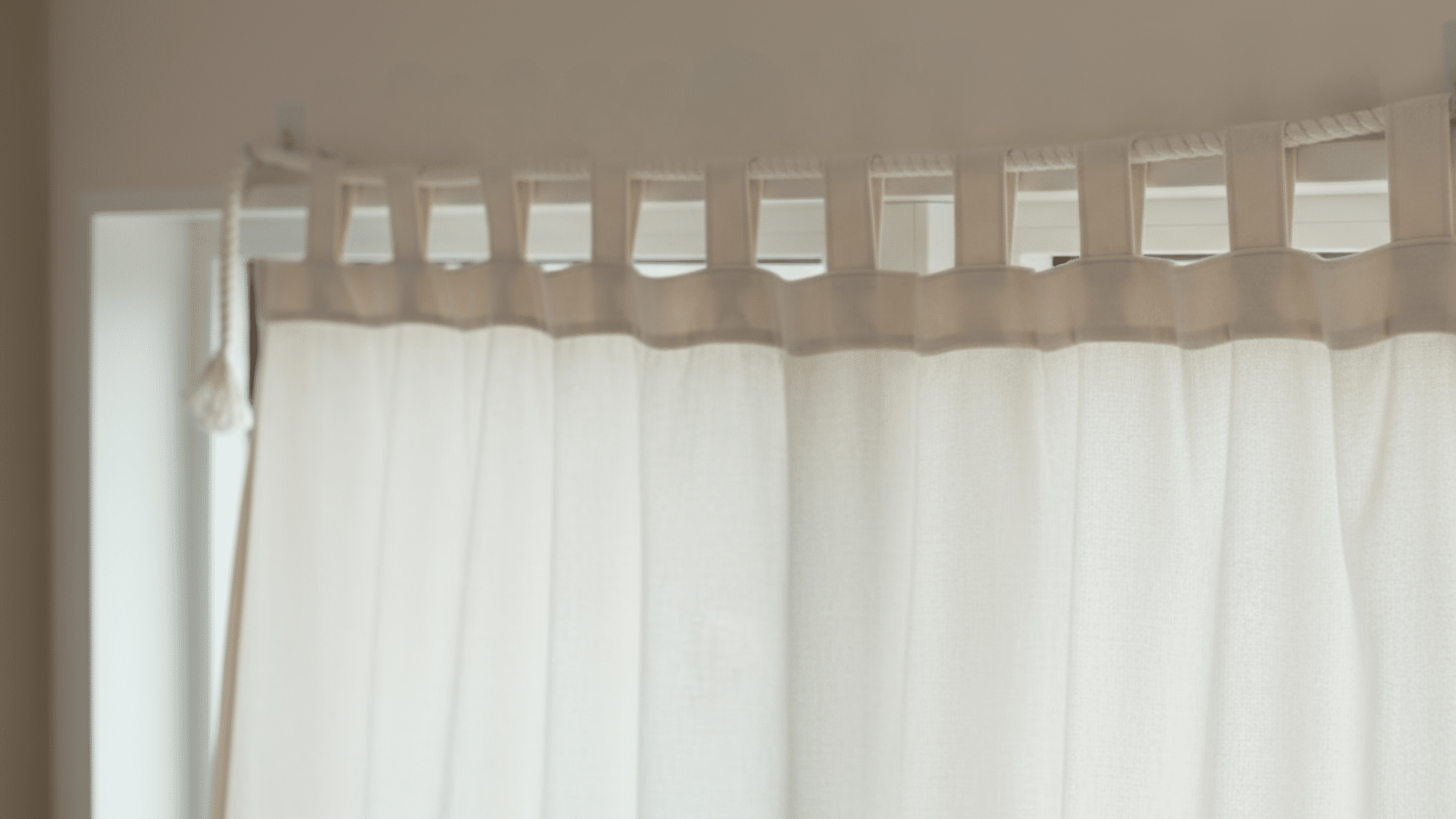
Gently pull your curtains back and forth to make sure they move smoothly along the rope. Adjust the spacing between curtains if needed.
Test the sticky hooks by gently tugging on the rope. If everything feels secure, you’re done! Your new curtain setup should work just as well as any traditional rod.
Your curtains are now successfully hung without using a single drill bit or making any holes in your walls!
Benefits of Hanging Curtains without A Rod
- Cost savings: Skip expensive rods, brackets, and finials. Adhesive hooks and tension systems cost a fraction of the cost of traditional hardware.
- Renter-friendly: No drilling means no wall damage and no lost security deposits. Perfect for apartments and temporary living spaces.
- Easy installation: Say goodbye to measuring brackets and power tools. Most rodless methods can be installed in minutes with simple adjustments.
- Flexible placement: Hooks, command strips, and tension rods fit awkward spaces where traditional rods won’t work, like tight corners or unusual window shapes.
- Modern aesthetic: Wire systems create sleek, modest looks. Hooks and clips offer an industrial or casual vibe that feels fresh and modern.
- Portable solutions: Take your hanging system with you without patching holes or dealing with removal hassles.
- Versatile options: Mix and match methods based on your space, style, and curtain weight. You’re not locked into one mounting approach.
- Quick changes: Swapping curtains becomes faster when you’re not dealing with rod hardware. Seasonal updates take minutes instead of hours.
Creative Ways to Hang Curtains Without a Rod
The various creative ways on how to hang curtains without a rod. These methods range from simple temporary solutions to more permanent alternatives.
1. Command Strips and Wire
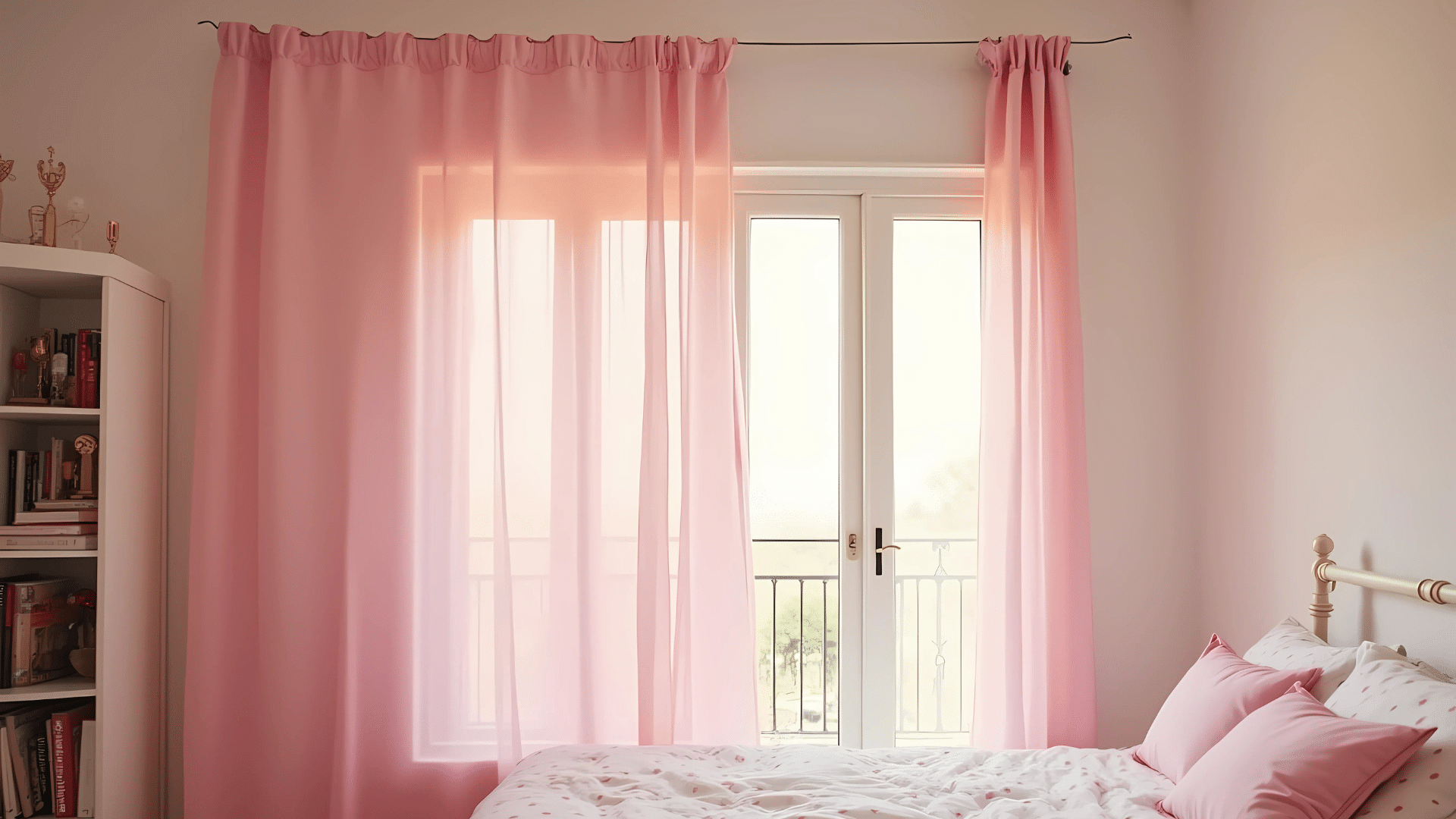
Attach heavy-duty Command strips to your wall, then string picture hanging wire between them. This creates a nearly invisible support system for your curtains.
The wire can hold more weight than a string and looks more professional. Remove easily without leaving marks when you move out.
2. Tension Wire System
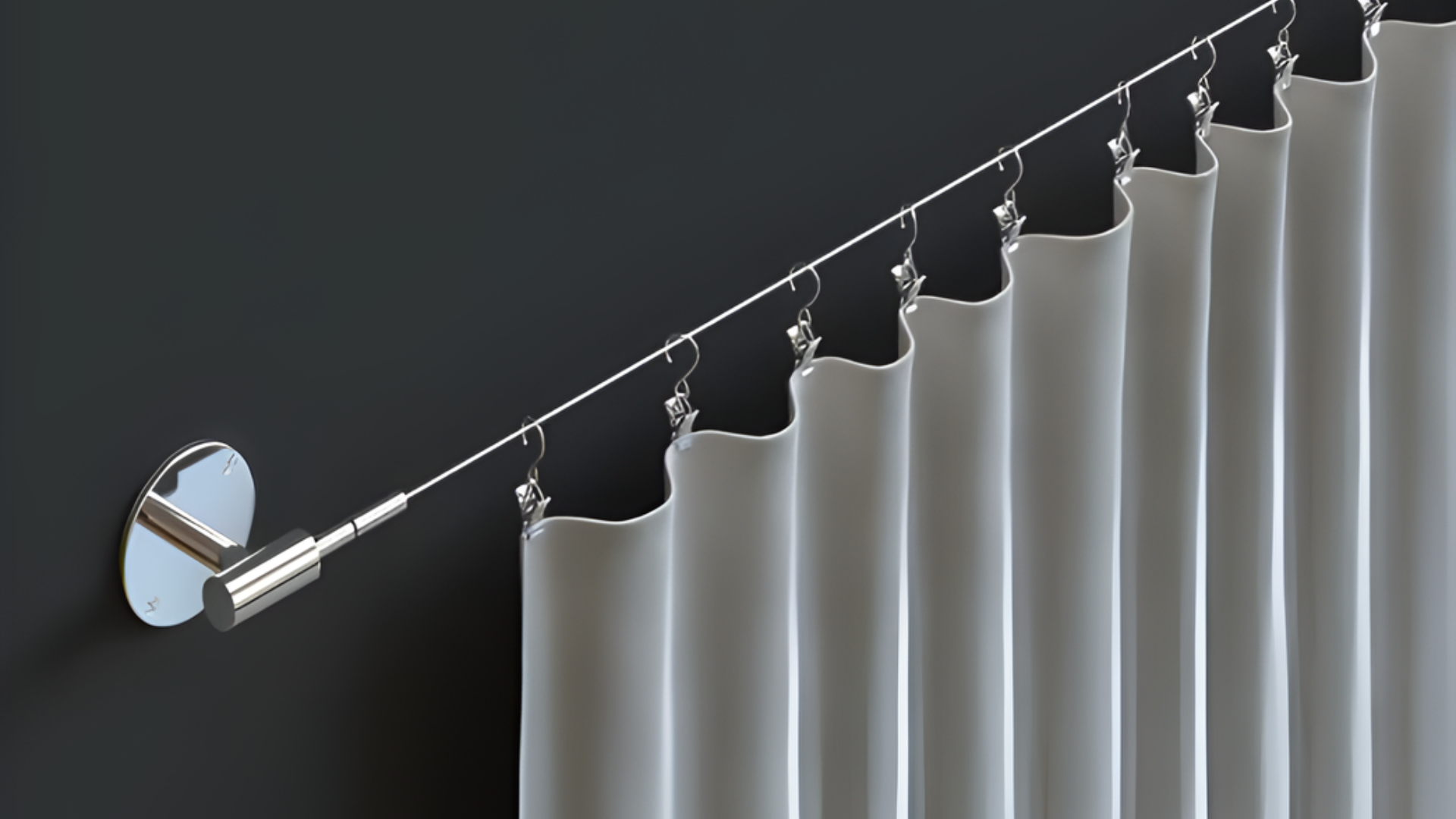
Install a tension wire between two walls or inside a window frame without any screws. The wire stretches tight and holds the curtains securely.
This works great in small spaces, such as bathrooms or between columns. Adjust the tension as needed and remove it at any time without damaging the surfaces.
3. Magnetic Hooks for Metal Frames
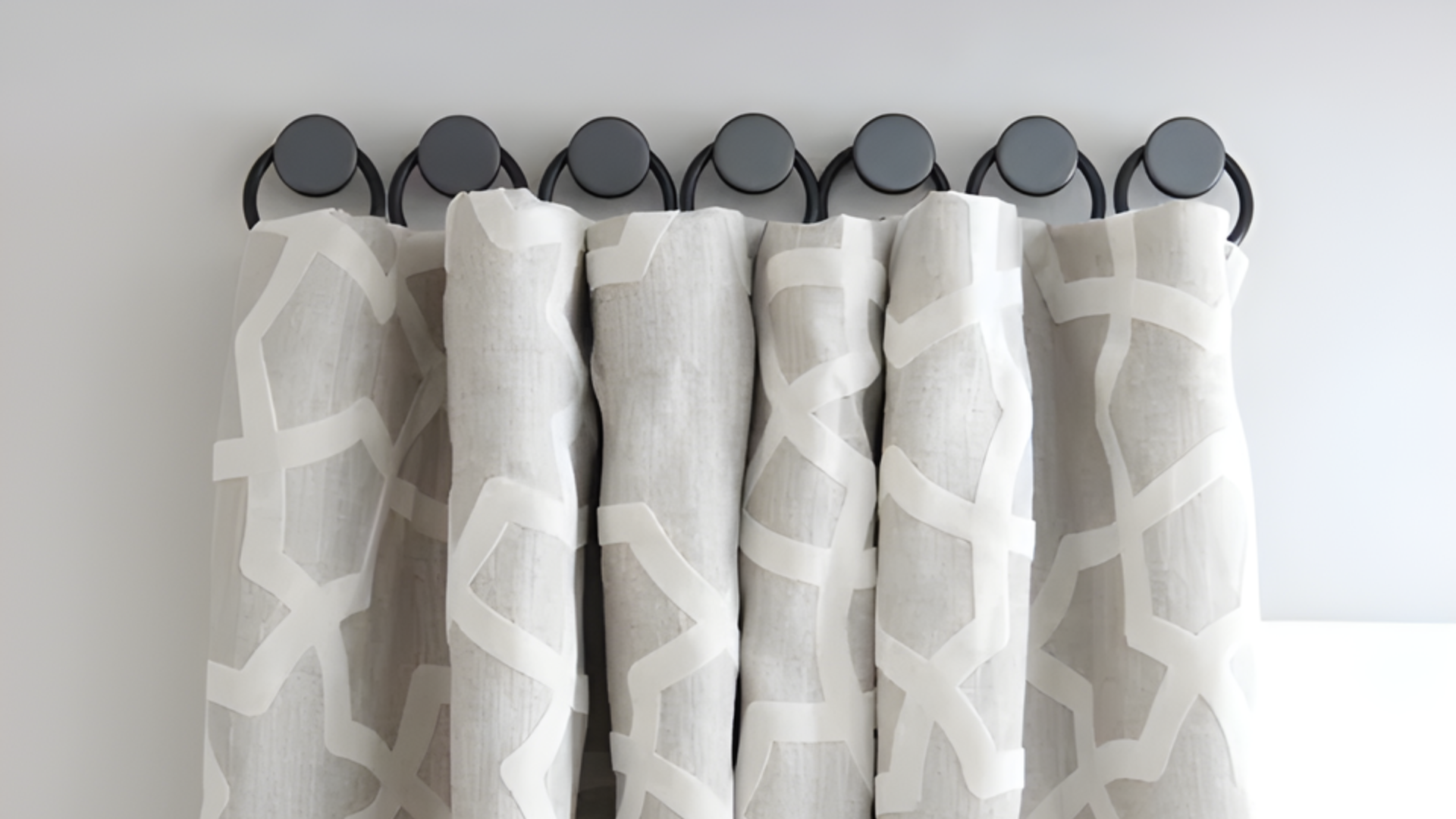
If you have metal window frames, magnetic hooks are your best friend. They stick instantly and hold surprisingly well.
String a rope or wire between the magnets to create your hanging line. This method works perfectly in apartments, offices, or any space with metal window frames or doors.
4. Suction Cup Hooks
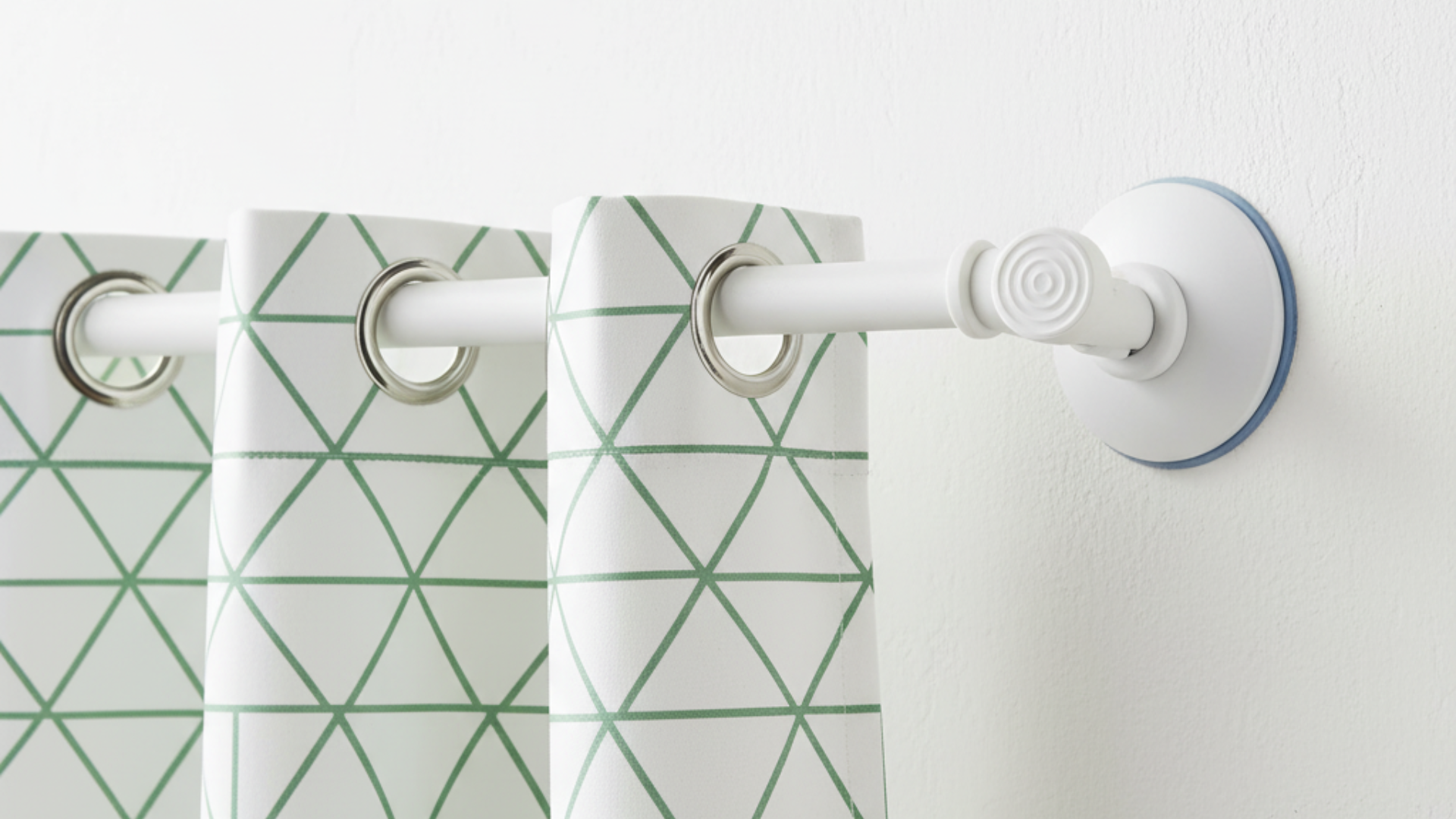
Strong suction cup hooks work well on smooth glass surfaces and tiles. Press them firmly against clean windows or bathroom tiles, then string your hanging line between them.
Check the weight limit before hanging heavy curtains. This method is completely removable and leaves no marks behind.
5. Ceiling-Mounted Hooks
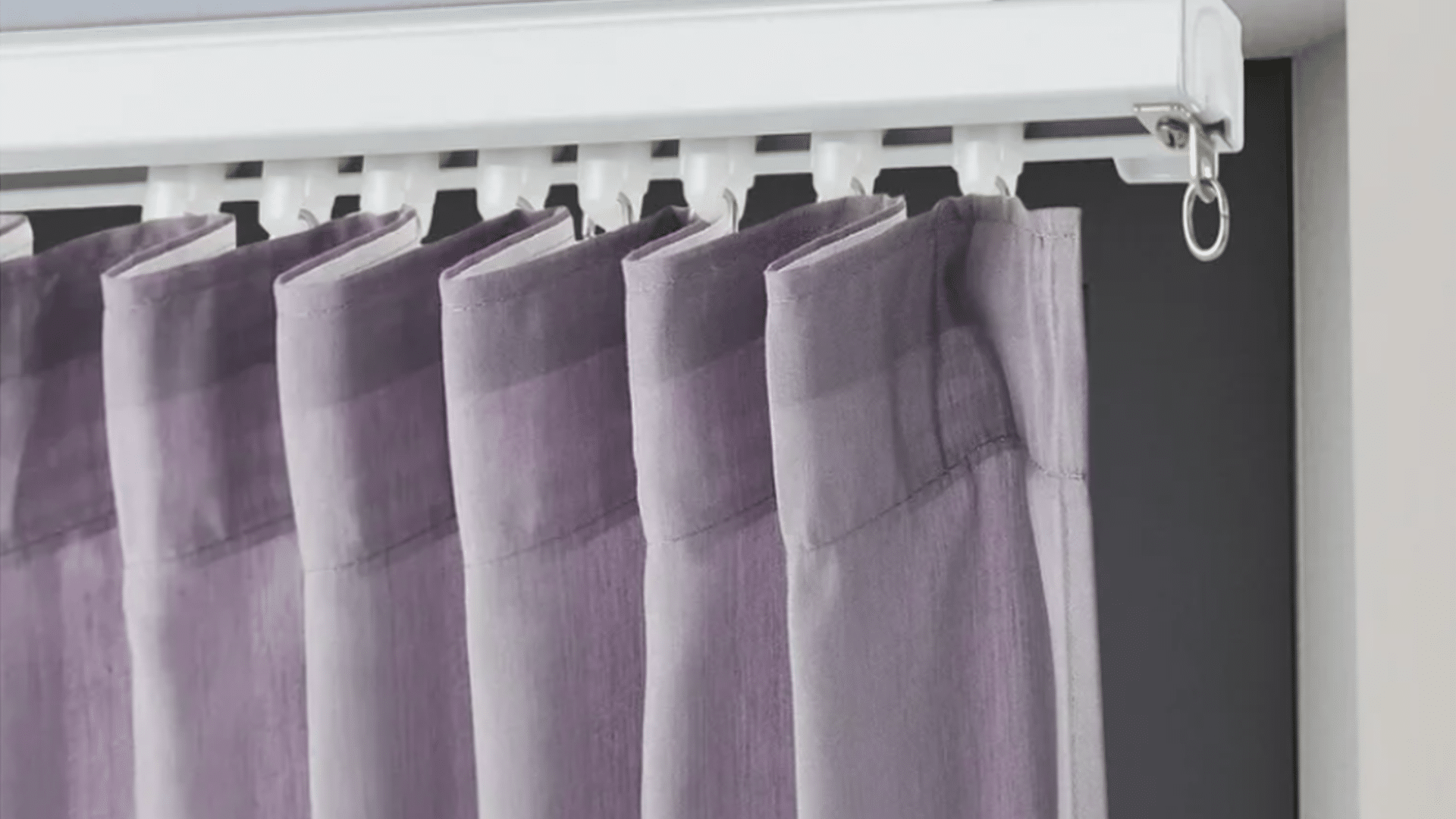
Install adhesive ceiling hooks directly above your window and hang curtains straight down. This creates a modern look and makes windows appear taller.
Use strong hooks rated for the weight of your curtains. The vertical hanging style works especially well with long, flowing curtains that touch the floor.
6. Clamp-On Brackets
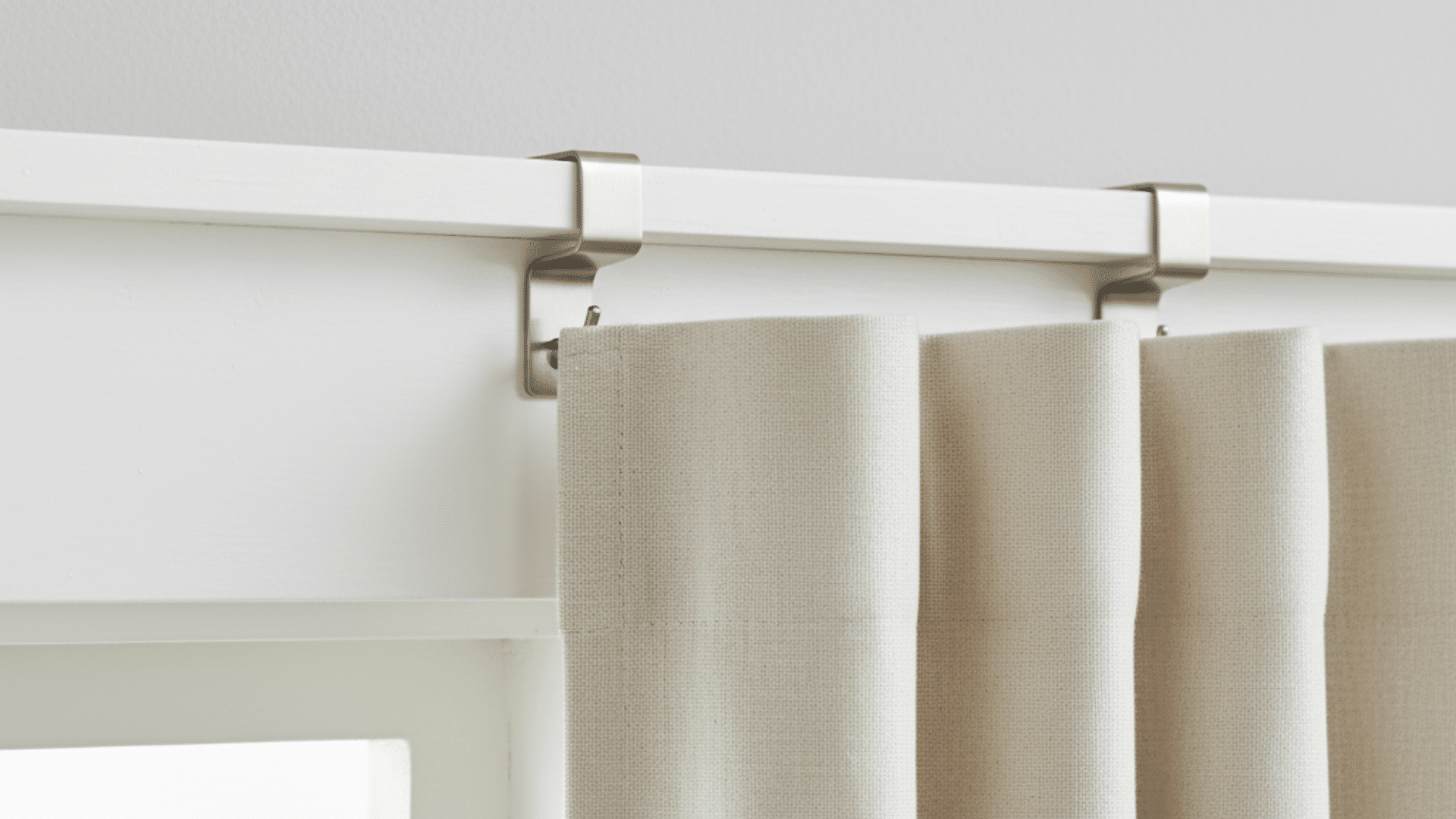
Use adjustable clamps that grip onto window frames or thick molding without screws.
These brackets hold a rope or wire system perfectly.
They work great on wooden frames and can be repositioned easily. The clamps distribute weight evenly and won’t damage painted surfaces when removed properly.
7. Velcro Strip Method
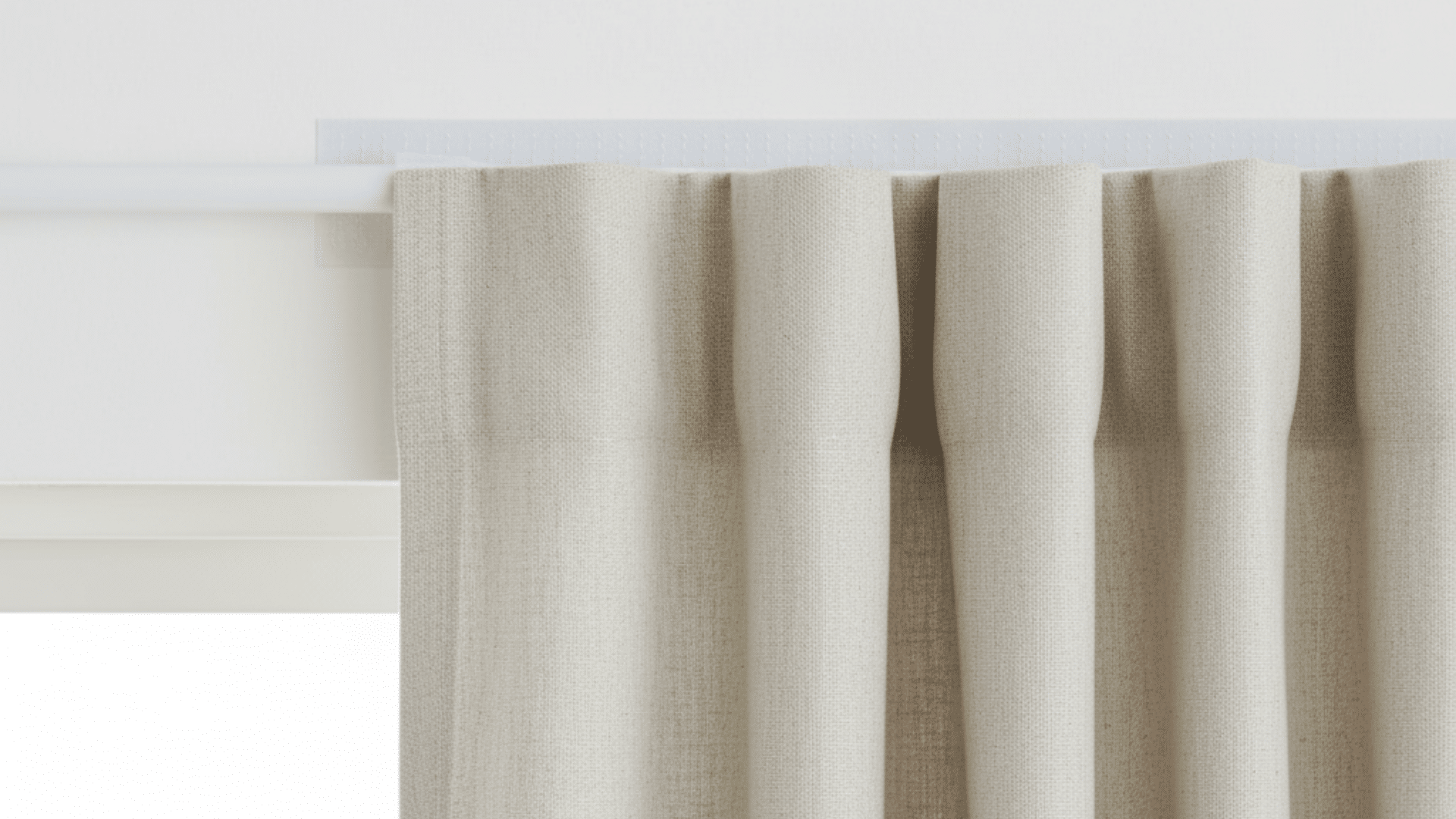
Attach one side of heavy-duty Velcro to your wall or window frame and the other to your curtain top. This creates a direct attachment without the need for any hanging hardware.
Works best with lightweight curtains, providing a clean, flat look against the wall. Easy to remove and reposition as needed.
8. Bungee Cord System
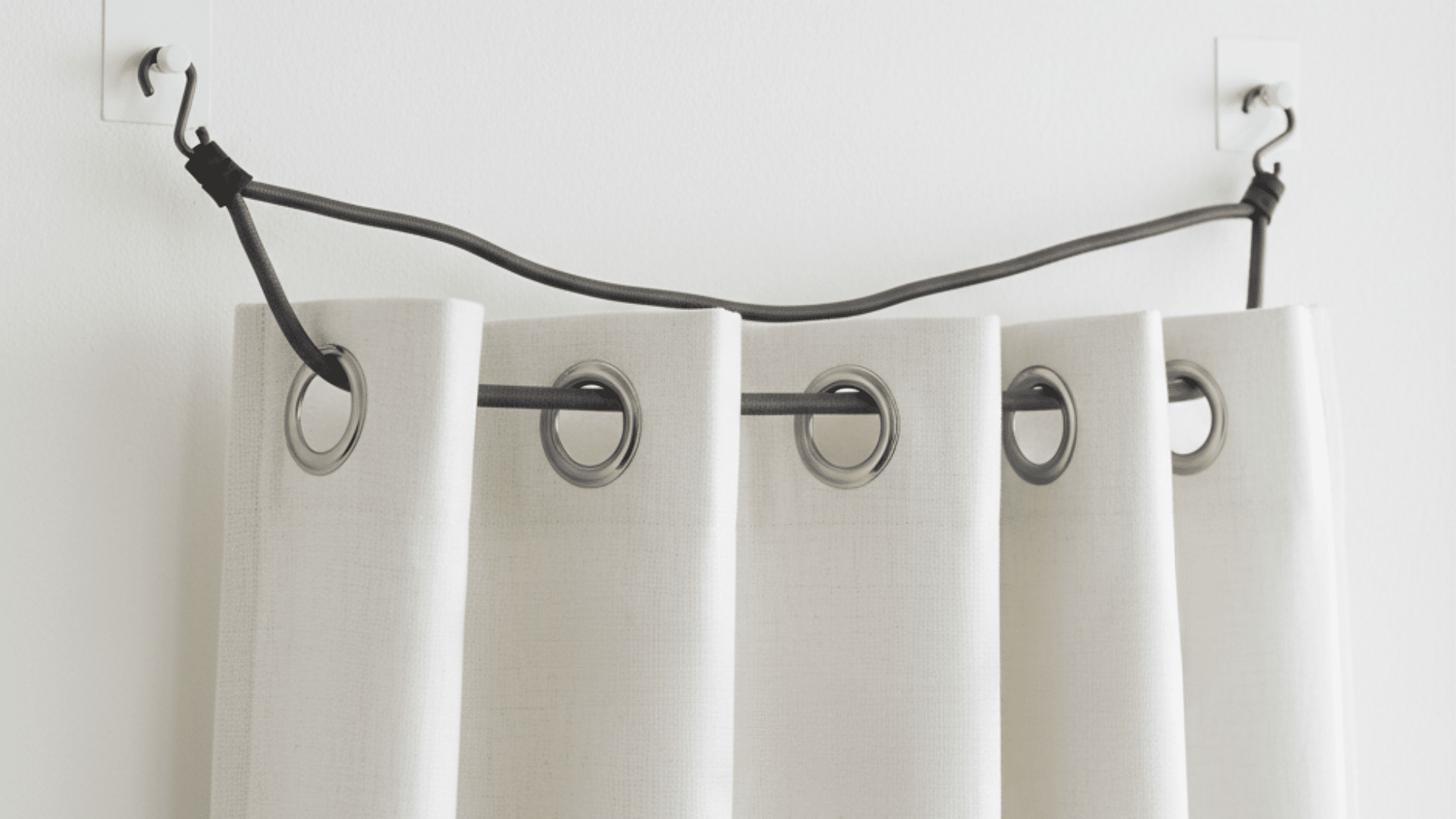
Stretch bungee cords between wall hooks or frame edges to create a flexible hanging system. The cords adjust to different lengths and hold curtains securely.
This method works well for uneven surfaces or curved windows. The stretch in the cords absorbs movement and prevents pulling on the wall attachments.
9. Rope and Pulley Setup
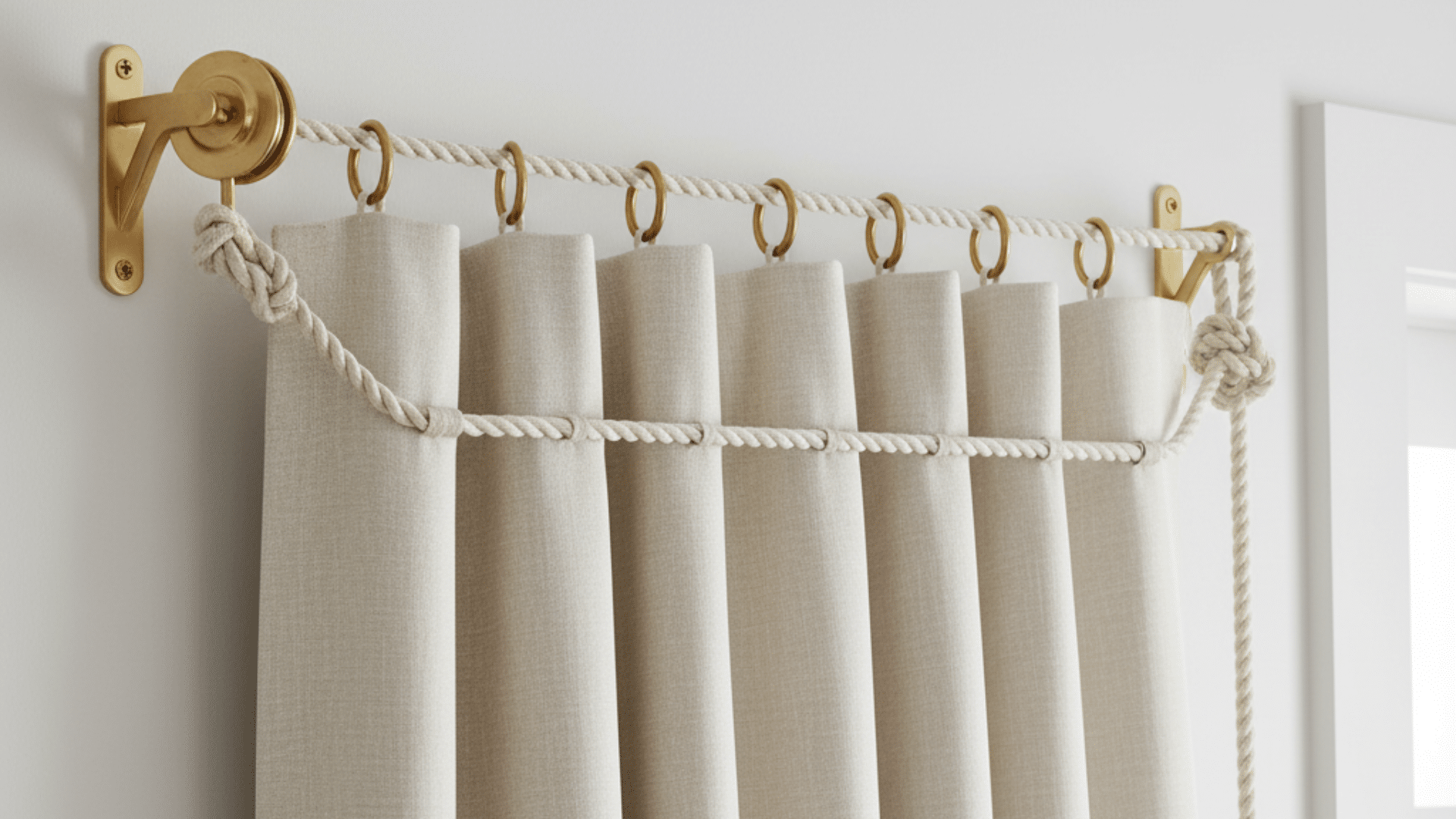
Create a functional curtain system using rope and small pulleys attached with hooks. This allows you to open and close curtains smoothly without having to physically touch them.
Great for hard-to-reach windows or heavy curtains. The pulley system reduces wear on both curtains and wall attachments over time.
10. Spring-Loaded Tension Rods
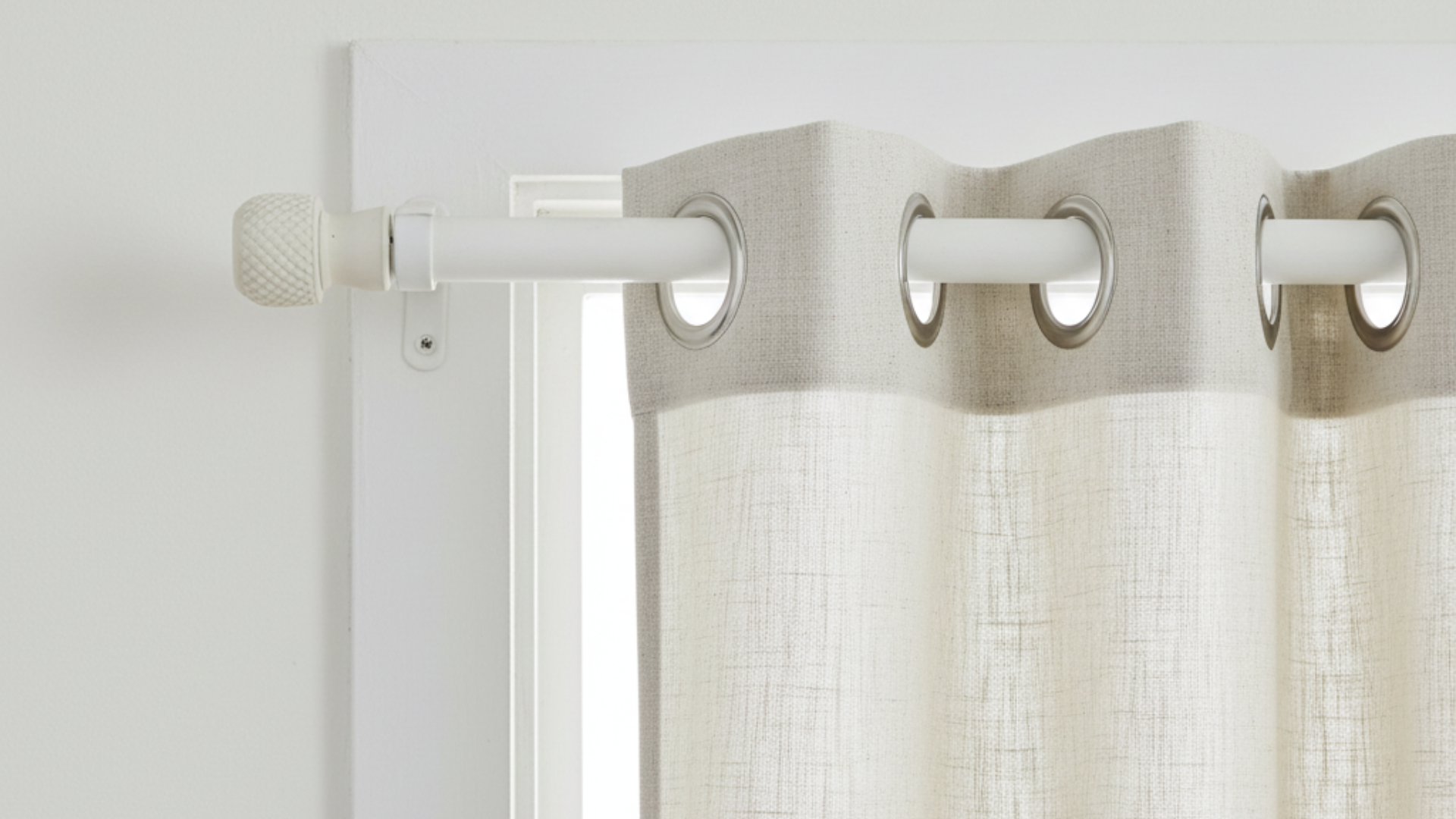
Use tension rods that press against walls or inside window frames without the need for mounting hardware. They stay in place through spring pressure alone.
Works perfectly in narrow spaces, such as between walls or inside deep window frames.
Adjust the length by twisting, and it can effectively support medium-weight curtains.
11. Clip-On Ring System
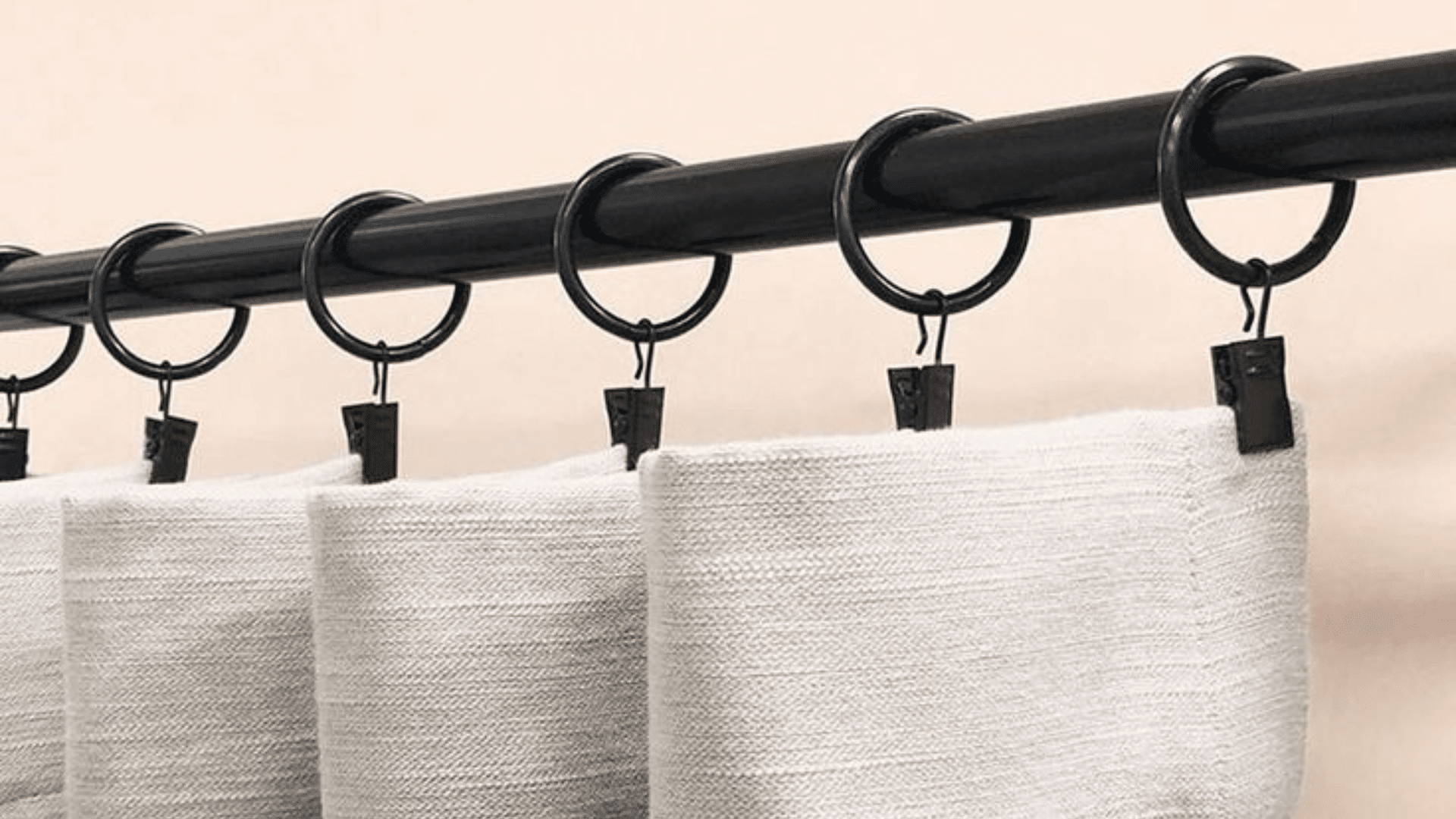
Attach large clips or rings directly to the curtain fabric, then hang them on any improvised line system. This works with curtains that don’t have built-in hanging loops or grommets.
Use binder clips, shower curtain rings, or decorative clips. This method lets you use any fabric as a curtain instantly.
12. Dowel and Bracket Alternative
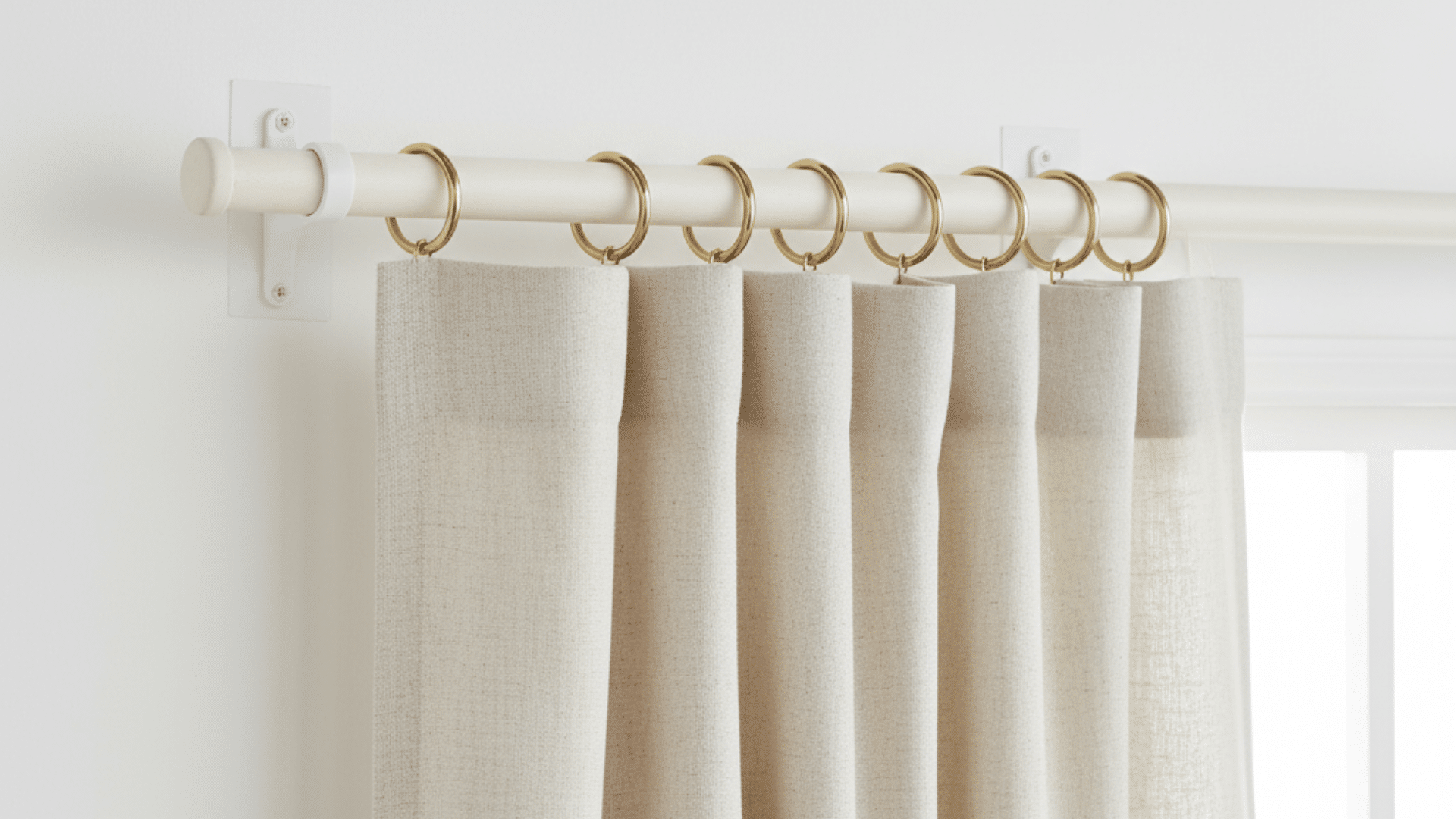
Place a wooden dowel or PVC pipe across the brackets or hooks for a rod-like system. This provides the traditional curtain hanging experience without requiring permanent installation.
Paint or decorate the dowel to match your decor. The system can hold heavier curtains than the string or wire methods.
13. Hook and Loop Tape
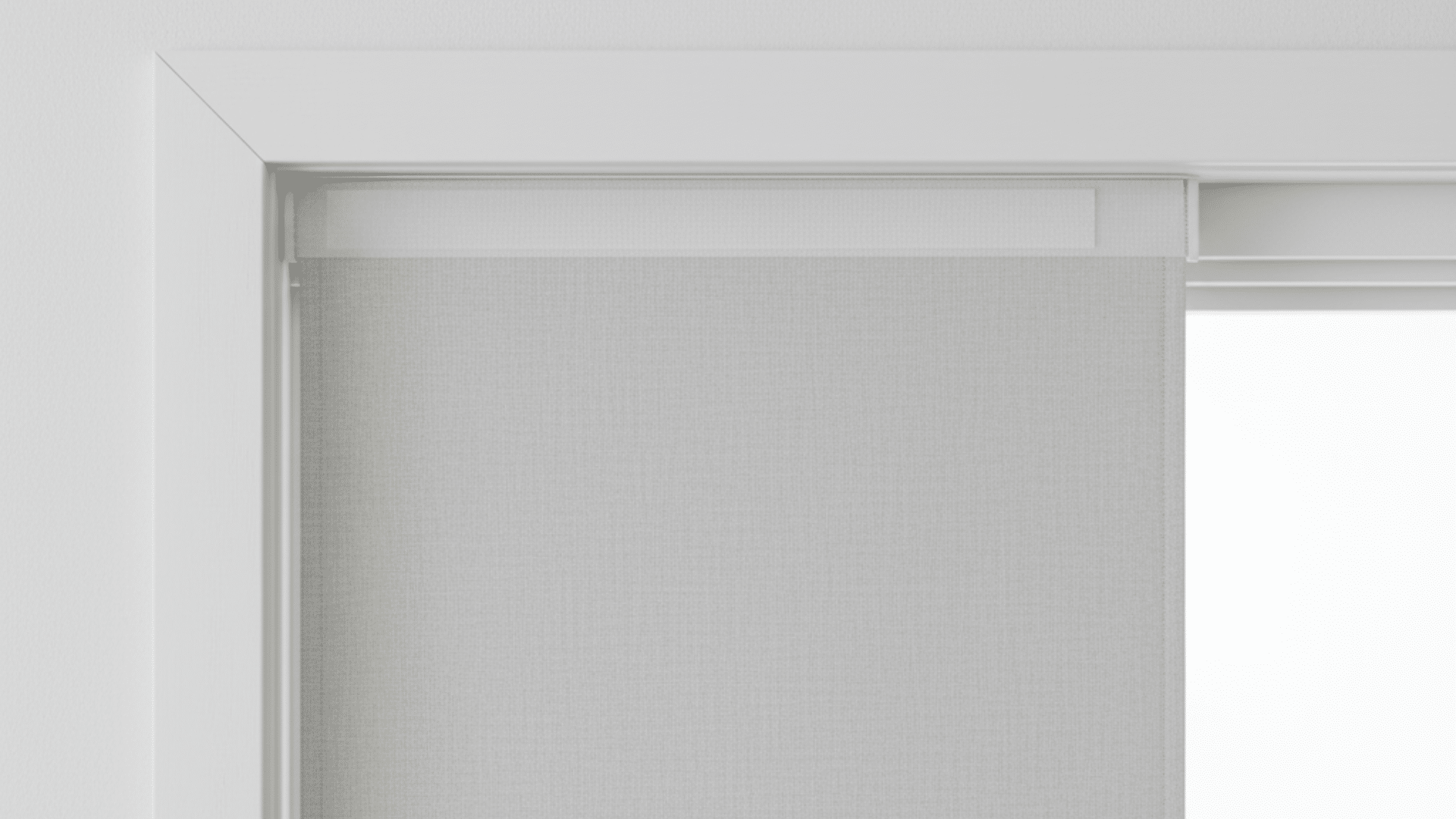
Apply industrial-strength hook-and-loop tape (Velcro) along your window frame and curtain top for direct attachment.
This method works great for Roman shades or flat-panel curtains. Creates a clean look with no visible hardware. Remove easily when needed without damaging paint or wallpaper underneath.
Smart Curtain Hanging Tips for Lasting Results
- Check weight limits first: Match your curtain fabric weight to your hanging system’s capacity to prevent sagging or falling.
- Clean surfaces thoroughly: Wipe walls with rubbing alcohol before applying adhesive hooks. Dust-free surfaces create stronger bonds.
- Measure twice, hang once: Mark placement spots with painter’s tape before committing. This prevents repositioning that weakens.
- Distribute weight evenly: Space hooks 6-8 inches apart instead of using just two or three points. This reduces stress on individual hangers.
- Choose the right method: Heavy blackout curtains need tension rods or reinforced hooks. Lightweight sheers work with command strips.
- Allow adhesives to set: Wait 24 hours after installing hooks before hanging curtains for maximum strength.
- Test before trusting: Gently tug on your system after installation to ensure it’s secure before adding the curtain
Key Takeaway
Now you know how to hang curtains without a rod and many other simple, effective methods to hang curtains without using a rod.
There are methods that fit your budget, skill level, and living situation.
Start with the hook method if you’re new; it’s foolproof and works for most situations.


